Salary Slip Formats
A salary slip, also known as an itemized pay statement in legal terms, is a document provided by the company to the employee that outlines all the details of the employee’s compensation. It also shows the deductions made from an employee’s salary for various purposes, such as tax and provident fund.
In the U.S., according to the Payment of Wages Act of 1991, it is a legal requirement for a company to issue pay slips to its employees, showing their earnings and deductions. Although employees usually need salary slips when applying for a loan or credit card, it is the company’s responsibility to issue the slips, nevertheless.
The Finance department of the company prepares and issues these slips to employees every month after the salary is paid out.
There are many formats for salary slips. Different companies use different formats. Even the programs used for making salary slips vary. Some organizations use Microsoft Excel templates, while others may use Microsoft Word. Companies can even create their formats.
Regardless of the format used, certain elements are essential to a salary slip, and all companies include them.
- Details of the employee and company: Including personal and professional information such as name, employee number, etc.
- Basic salary – This represents 100% taxable income, comprising the basic wage paid in cash.
- Rent allowance – the amount is mentioned on the slip for the house rent given to the employee.
- Conveyance allowance – this is often provided to employees to cover transportation costs to and from work.
- Medical allowance – this includes insurance provided by the company.
- Bonuses or special allowances – all bonuses for the month are listed.
- Any other income – if an employee earned any other money through the company in the month, it is also mentioned on the salary slip.
- Deductions – provident fund, taxes, etc.
These salary slips can prove to be very useful for employees. The uses can include, but are not limited to:
- When employees apply for loans or credit cards, their salary slips serve as evidence of their income.
- Employees can compare different jobs based on these skills. If an employee wants to switch, they can compare the packages being offered by other jobs.
- By making use of deductions, the tax liability can be optimised.
- Understand what percentage of your earnings is allocated to forced savings, so you can effectively manage your monthly budget.
Therefore, salary slips are a useful document for employees and often many employees keep a record of them in case the need arises. It is legally binding on the organisation where an employee is working to issue these salary slips every month.
Different salary slip formats are available, and the templates can be downloaded for use.
Formats & Details
#1
Standard Salary Slip Format
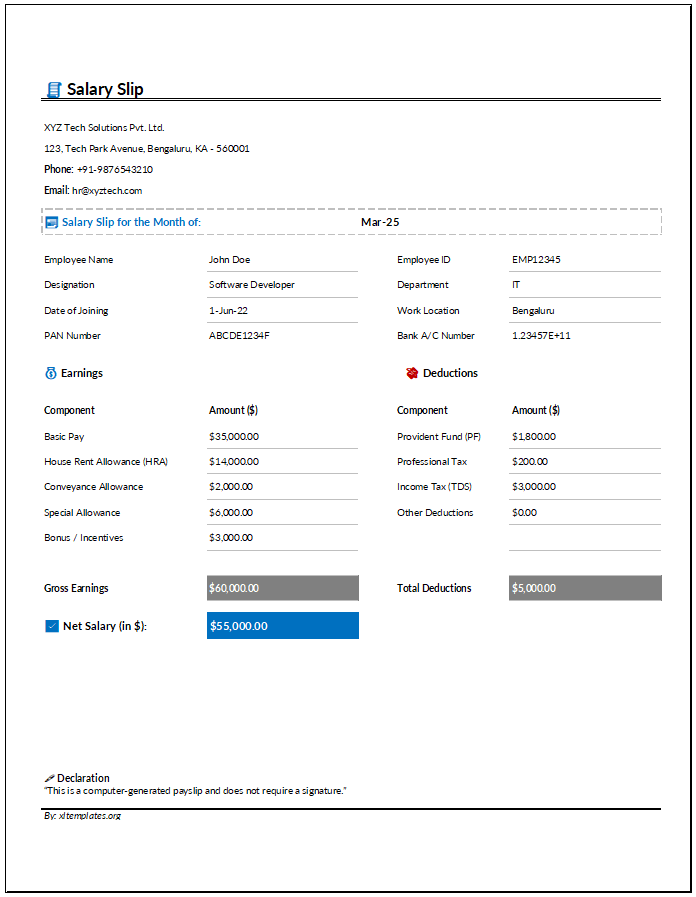
Standard Salary Slip Format includes:
- Company information
- Employee details
- Earnings & deductions breakdown
- Net salary
MS Excel [.xlsx] File: 134 KB
#2
Private Company Salary Slip Format
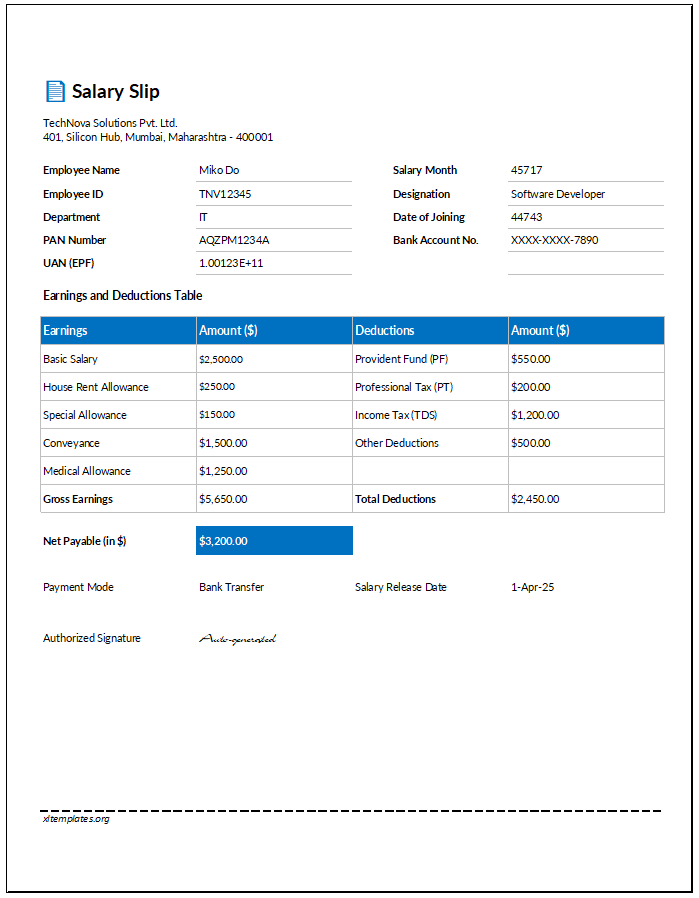
Standard Salary Slip Format includes:
- Company details
- Employee data
- Salary components
- Net salary
MS Excel [.xlsx] File: 134 KB
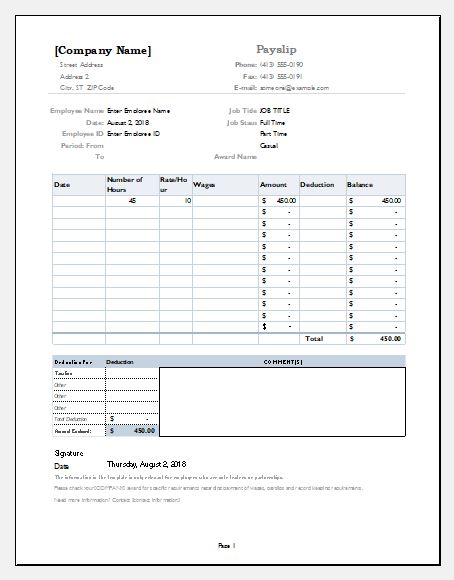
MS Excel [.xlsx] File: 134 KB
Weekly Payslip Format
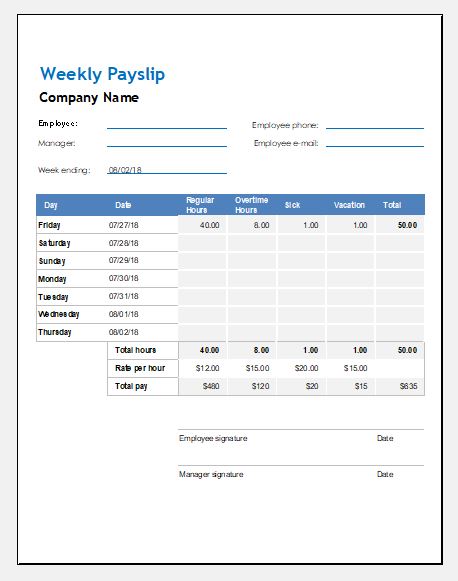
MS Excel [.xlsx] File: 134 KB
Biweekly Payslip Format
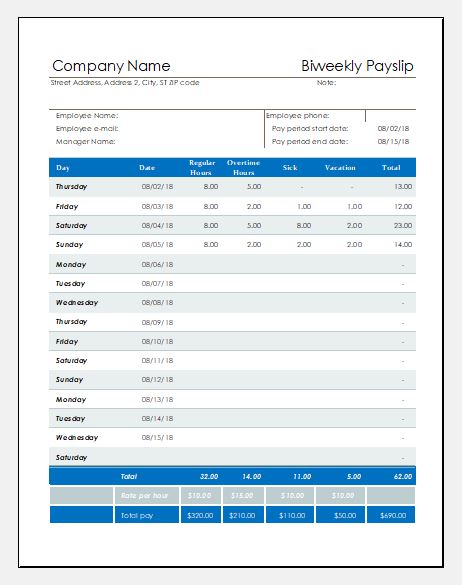
MS Excel [.xlsx] File: 134 KB
- Product Sales Tracker Template
- Debit Memo Template for Excel
- Winter Attire Inventory
- Financial Projections Worksheet
- Employee Absence Tracker
- Weekly Sales Report Template
- Budget Vs Actual Statement
- Remote Work Attendance Tracker
- Mileage Expense Report Template
- Fitness Calendar Template
- Project Gantt Chart
- Daily Attendance Tracker for an Individual Employee
- Overtime Hours Tracker Template
- Vacation and Leave Tracker Template
- Departmental Expense Report Template
← Previous Article
Employee Absence Tracker CalendarNext Article →
Daily Sales Log
Leave a Reply